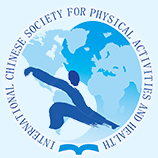Document Type
Abstract
Keywords
APENS, enlightenment, individuals with disabilities
Publication Date
2-2023
Abstract
As the total number and proportion of individuals with disabilities worldwide are increasing, the international community is paying more and more attention to the equal education rights of individuals with disabilities. Since the Individuals with Disabilities Education Act issued in 1975, physical education (PE) played a significant part in special education. According to the requirements of the United States federal legislation, a national certification examination system has been established and developed subsequently to better promote the development of physical education for children with disabilities. The National Consortium for Physical Education for Individuals with Disabilities (NCPEID) has formulated the Adapted Physical Education National Standards (APENS). The first version of APENS was developed in 1995 to certify adaptive sports professionals across the United States. The second edition came out in 2006. In addition, many undergraduate and graduate teacher education programs use APENS as a basis for preparatory courses. At some universities, completion of APENS has become a graduation requirement. The NCPEID reviews APENS every few years to keep it up to date, and it also reviews national tests as needed to reflect current knowledge and practice. This paper was to understand the primary contents of APENS. We found that the APENS include Human Development, Motor Behavior, Exercise Science, Measurement and Evaluation, History and Philosophy, Unique Attributes of Learners, Curriculum Theory and Development, Instructional Design and Planning, Teaching, Consultation and Staff Development, Student and Program Evaluation, Continuing Education, Ethics and Communication. These standard fields guide teachers, administrators, and families in basic knowledge, skills, and attitudes. In addition, the establishment of APENS has reference value and significance for the system construction, legal regulations, discipline construction, personnel training, peer education, community support, and other aspects of PE for individuals with disabilities in China.
DOI
https://doi.org/10.18122/ijpah.020137.boisestate
Recommended Citation
Song, Yuting; Dong, Cuixiang; and Ji, Liu
(2023)
"History, Development, and Enlightenment of Adapted Physical Education National Standards,"
International Journal of Physical Activity and Health: Vol. 2:
Iss.
1, Article 37.
DOI: https://doi.org/10.18122/ijpah.020137.boisestate
Available at:
https://scholarworks.boisestate.edu/ijpah/vol2/iss1/37
Included in
Exercise Science Commons, Health and Physical Education Commons, Public Health Commons, Sports Studies Commons


